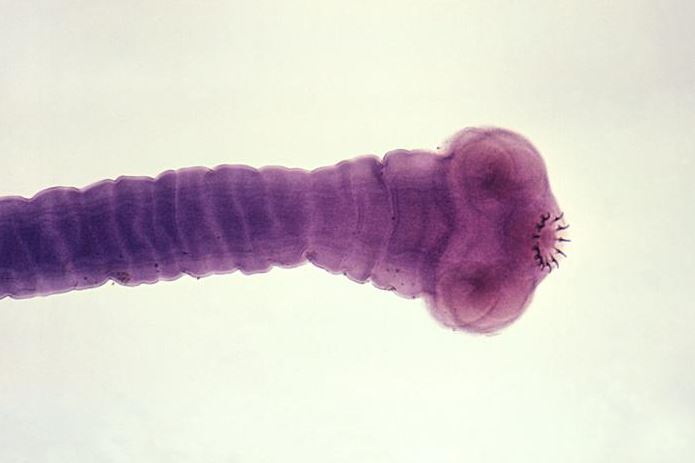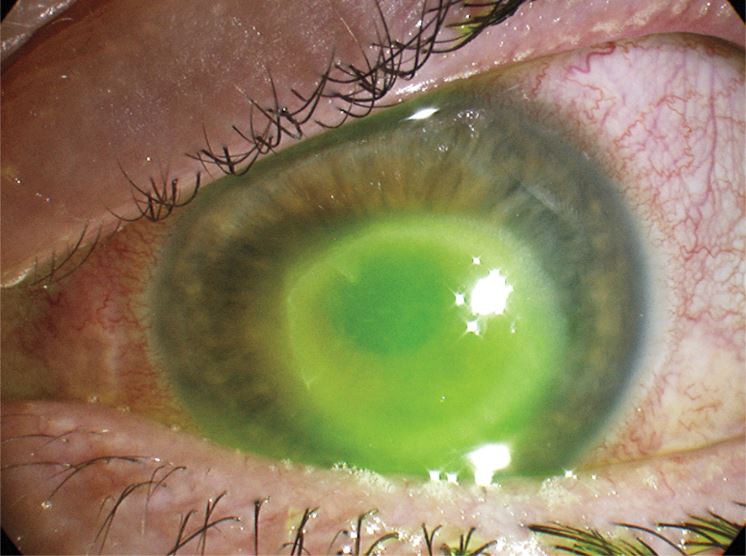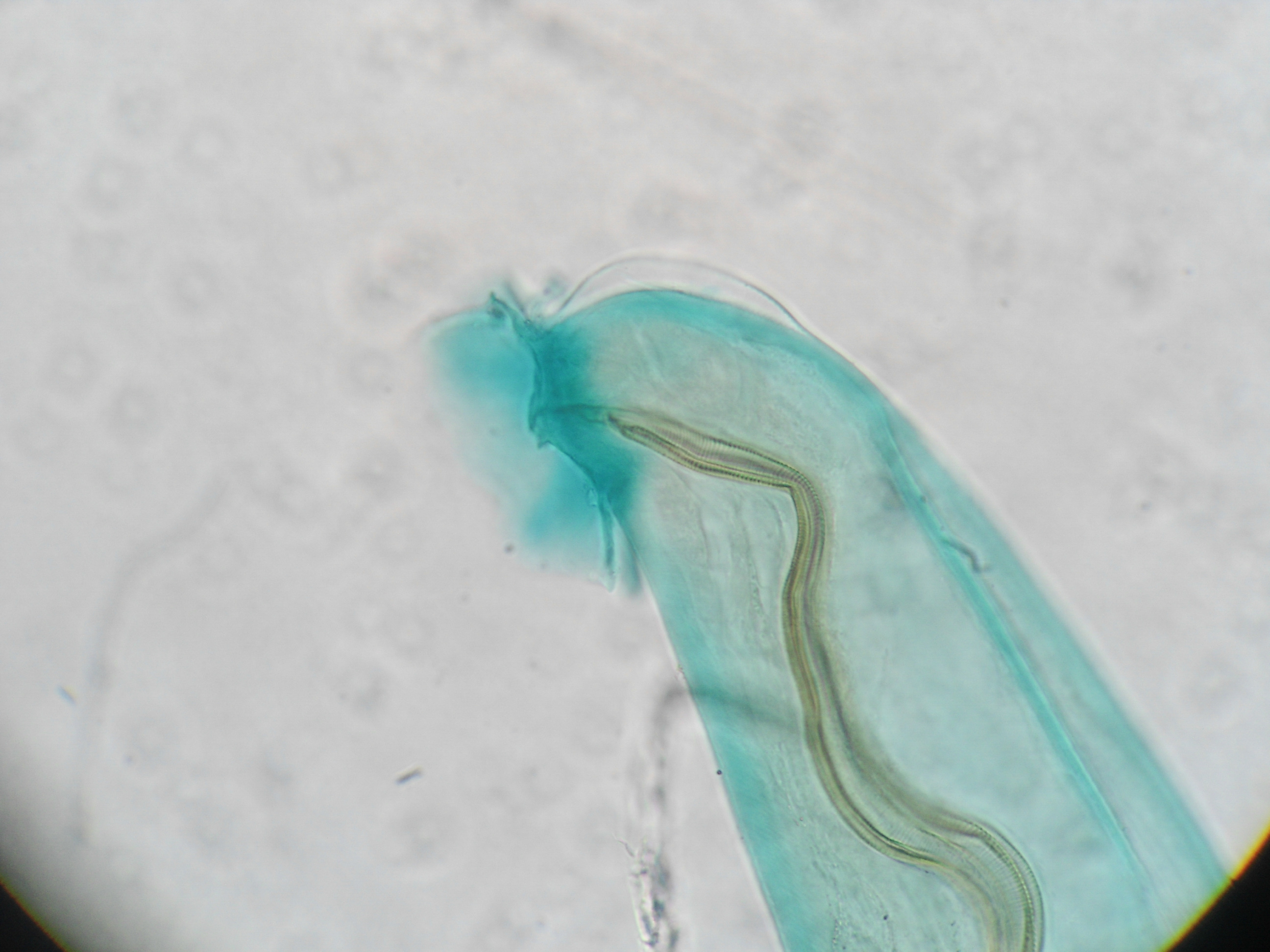6 Times Parasites Grossed Us Out in 2019
Here are the weirdest parasitic infections we covered this year.

Some parasitic infections are deadly, while others are just a nuisance. But regardless of their severity, they always gross us out.
A parasite is essentially any organism that lives off another, getting its nutrients from its "host."
Here are the weirdest parasitic infections we covered this year.
Eye worms

A woman in California was particularly unlucky when she contracted an eye worm infection, likely while on her trail run.
The 68-year-old woman is only the second person known to have contracted this particular worm, which typically infects cows, according to a report of the case, published Oct. 22 in the journal Clinical Infectious Diseases.
After going on trail runs in Carmel Valley, California, the woman noticed irritation in her right eye. That's when she flushed her eye with tap water and saw a small roundworm come out.
The woman was eventually found to have an infection with a species of eye worm called Thelazia gulosa. This worm usually infects cattle and is carried by certain types of face flies. It's not clear how the woman got the infection, but she may have contracted it during a trail run in which she ran into a swarm of flies. The woman and her doctors ultimately retrieved a total of four worms from her eyes. She regularly irrigated her eyes for weeks, and eventually, the worms cleared up.
Sign up for the Live Science daily newsletter now
Get the world’s most fascinating discoveries delivered straight to your inbox.
Brain tapeworm

The idea of having a tapeworm lurking in your brain sounds horrifying. But for a woman in New York, the news that she had this type of brain parasite was actually a relief.
The 42-year-old woman had been told that she might have a malignant brain tumor — a potentially devastating diagnosis. But when doctors performed brain surgery, they found a huge surprise: Instead of seeing the soft tissue typical of a brain tumor, they saw something that looked more like a rock or a quail egg. Even more shocking, a baby tapeworm emerged out of the "egg."
The woman was diagnosed with neurocysticercosis, a parasitic disease that occurs when a person ingests microscopic eggs from a pork tapeworm (Taenia solium). When the eggs hatch, the larvae can travel throughout the body, including to the brain, where they form cysts. It's unclear how the woman contracted the infection, which is rare in the U.S. But once the cyst was removed, she didn't need any more treatment.
Infection from contacts

Keeping your contact lenses in while showering might seem like no big deal, but this habit can have a serious consequence: It puts contact lens wearers at risk for a parasitic eye infection that can cause blindness.
Two cases from 2019 highlight this risk. The first is that of a 41-year-old woman who kept her disposable contact lenses in while swimming and showering. She developed blurry vision, eye pain and sensitivity to light in her left eye. During an eye exam, doctors could see a cloudiness in the women's cornea, the eye's transparent outer covering. Samples from her eye tested positive for Acanthamoeba keratitis, a rare parasitic infection of the cornea.
This parasite is an amoeba that's commonly found in water, soil and air, according to the Centers for Disease Control and Prevention (CDC). Contact lens wearers face a risk of contracting this infection if they engage in certain practices, such as disinfecting lenses with tap water or swimming or showering while wearing lenses.
Despite treatment, the woman was left with permanent vision loss, according to a report of her case, published July 17 in The New England Journal of Medicine.
In a similar case, a man in the United Kingdom said he contracted Acanthamoeba keratitis after wearing contact lenses in the shower, which also left him blind in one eye. "If I'd known how dangerous it was to wear contacts in the shower, I would never have got them in the first place," the man said.
Rat lungworm

Some Hawaii tourists take home more than a tan. Several visitors to theBig Island developed a parasitic infection called rat lungworm in 2019.
Two tourists, both residents of the mainland U.S., became infected with rat lungworm after they visited Hawaii in January and February 2019, according to the Hawaii State Department of Health. (The cases were unrelated.) In another case, a tourist became infected after ingesting a slug on a dare in late December 2018, although the case was not confirmed until 2019.
Rat lungworm is a disease caused by a roundworm parasite called Angiostrongylus cantonensis. As part of its life cycle, the parasite infects rodents, laying eggs in the animals' pulmonary arteries, which carry blood to the lungs.
Humans can become infected if they eat raw or undercooked snails or slugs, which also carry the parasite. People may also catch the disease if they eat produce contaminated with A. cantonensis.
In people, larvae from the parasite can make their way to the brain and cause meningitis, an infection of the membranes that cover the brain and spinal cord. There is no specific treatment for the disease, and because the parasite cannot grow or reproduce in humans, it eventually dies.
Brain-eating amoeba

Infections with the "brain-eating" amoeba Naegleria fowleri are rare, but when they occur, they are often deadly. In 2019, the parasite made headlines when it led to the death of a man in North Carolina.
The 59-year-old man became ill in July after visiting Fantasy Lake Water Park, a man-made lake in the southeastern part of the state. He tested positive for N. fowleri, a single-celled organism that's naturally found in bodies of warm freshwater, such as lakes and rivers.
Swallowing N. fowleri in water will not cause an infection. But if water containing this amoeba goes up the nose, the organism can enter the brain and be fatal. The amoeba destroys brain tissue, which results in brain swelling and usually death, according to the CDC.
Still, infections are extremely rare. From 1962 to 2018, there were just 145 cases of N. fowleri reported in the U.S. But the illness has a very high fatality rate — of the 145 cases, just 4 people survived.
Forehead larvae

Fly larvae can grow in some unusual places, including, it turns out, a person's forehead. That was the case for a British woman who visited Uganda and unknowingly left the country with fly larvae in her noggin.
After returning home, the 55-year-old woman noticed a swollen lump on her forehead. At first, doctors thought the lump was an infected bugbite, but it kept getting bigger even with antibiotic treatment. Doctors later discovered a small opening in the area, which turned out to be a breathing hole for fly larvae, or maggots, living in her forehead, according to a report of the case, published Jan. 22 in the journal BMJ Case Reports.
The woman was diagnosed with an infestation of the Lund's fly (Cordylobia rodhaini), a type of fly that lives in African rainforests and can infest human skin. More typically, such infestations are found in the chest, back, stomach or thighs.
The woman may have become infected when she wrapped her hair with a towel that had been hanging outside and had maggots on it. Doctors were able to successfully remove the maggots from the woman's forehead.
Originally published on Live Science.

Rachael is a Live Science contributor, and was a former channel editor and senior writer for Live Science between 2010 and 2022. She has a master's degree in journalism from New York University's Science, Health and Environmental Reporting Program. She also holds a B.S. in molecular biology and an M.S. in biology from the University of California, San Diego. Her work has appeared in Scienceline, The Washington Post and Scientific American.










